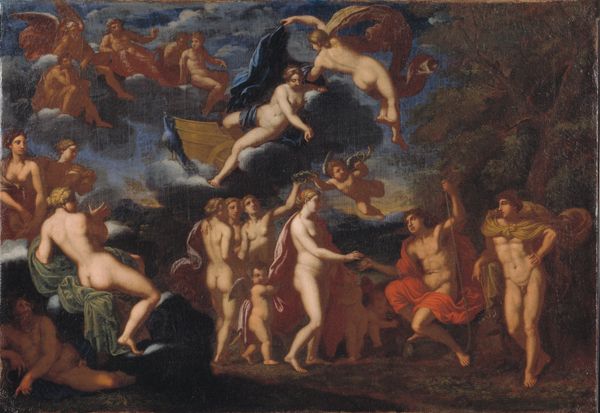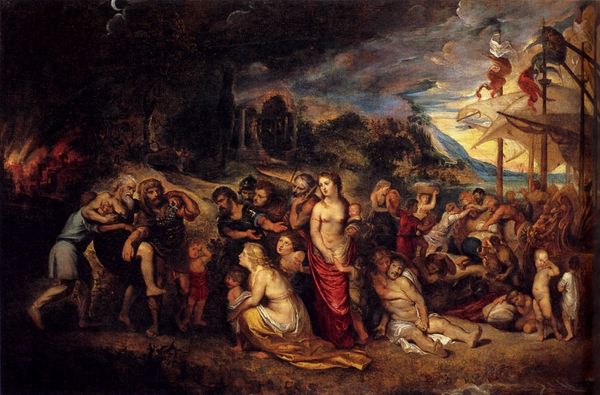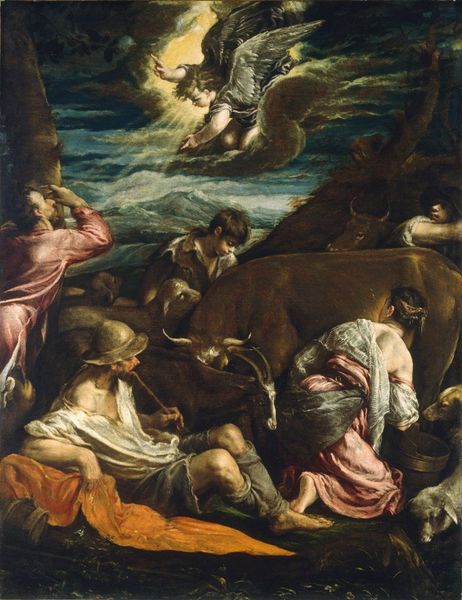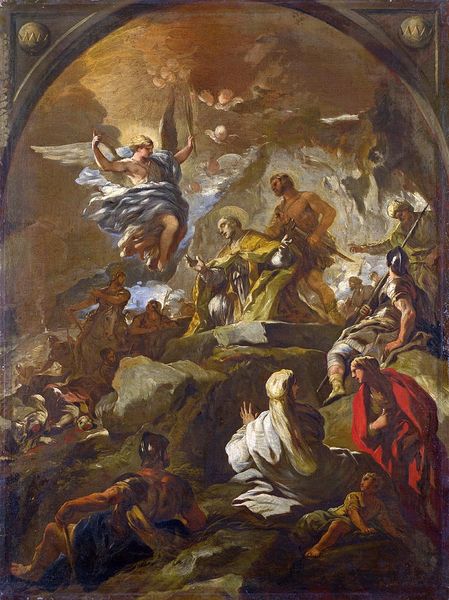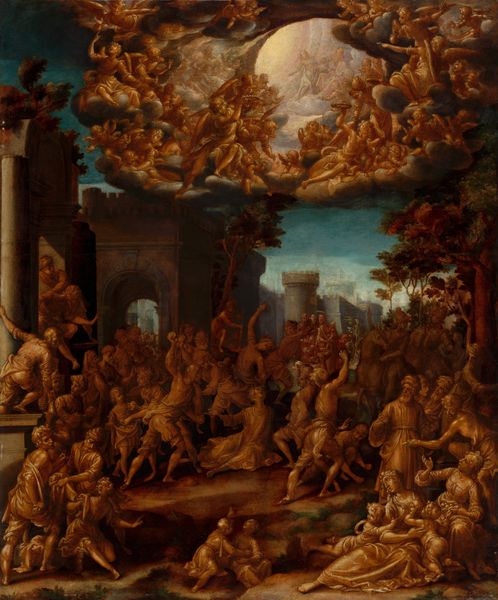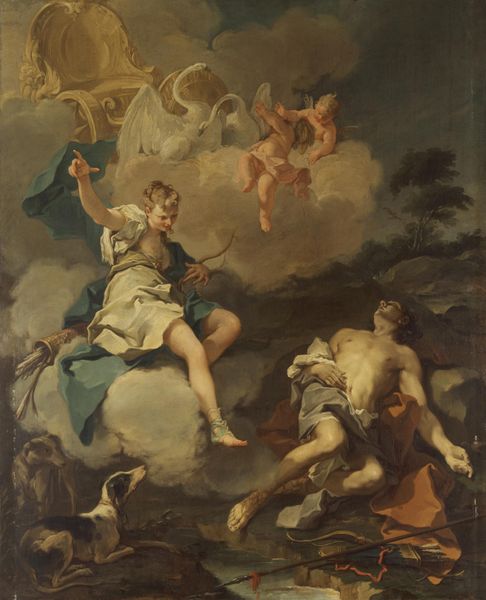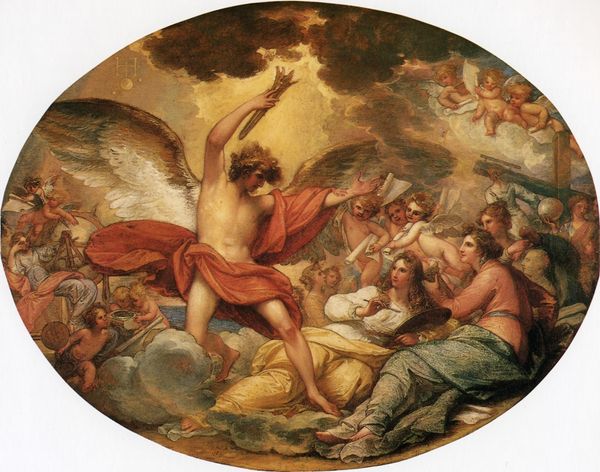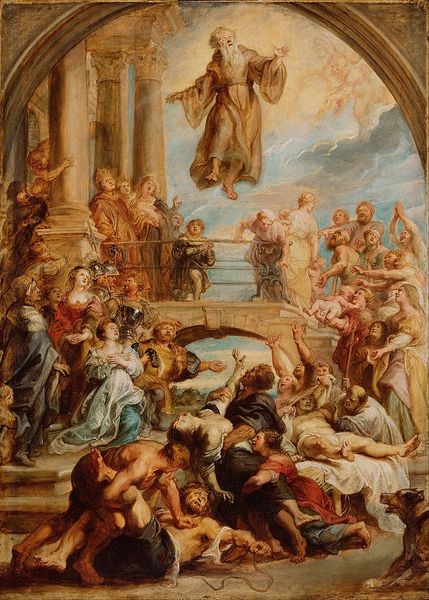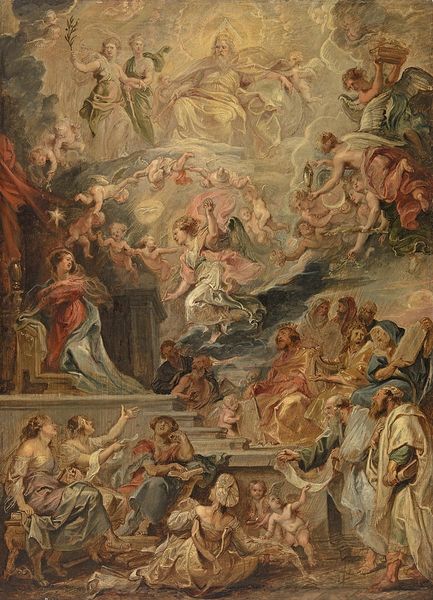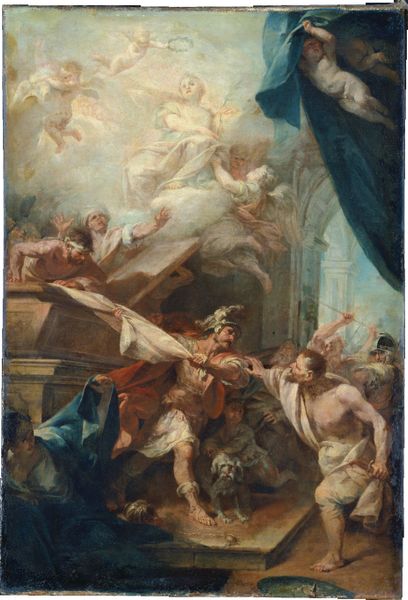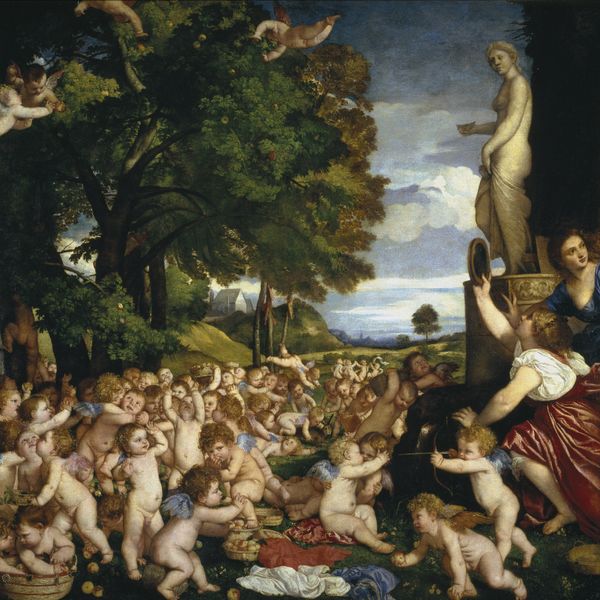
painting, oil-paint
#
baroque
#
painting
#
oil-paint
#
figuration
#
oil painting
#
watercolour illustration
#
history-painting
#
angel
#
christ
Dimensions: 26 x 40 in. (66 x 101.6 cm)
Copyright: Public Domain
Editor: Here we have Sebastiano Ricci’s "The Baptism of Christ," created with oil paint around 1713-1714. I'm really struck by the asymmetry of the composition; it feels so dynamic and kind of unsettled. What do you see in this piece? Curator: Well, viewing it through a historical lens, the dynamism you observe is very much a characteristic of the Baroque style. Think about how the Catholic Church used art during the Counter-Reformation. Ricci masterfully employs this dramatic composition to enhance the scene's emotional impact. The painting isn’t simply depicting an event; it’s striving to inspire faith and awe in the viewer. Editor: So it was like propaganda, almost? Commissioned to reinforce religious doctrine? Curator: Exactly. The public role of art was significant. Ricci's theatricality is a clear tool for persuading and engaging a wide audience. And it wasn’t just about religion, Baroque art was favored by absolutist regimes too as a way to project power. What do you make of the placement of the angels at the top? Editor: Hmm, the cluster of angels seems to validate the act of baptism from a divine point of view, solidifying that heavenly connection. That brings an extra layer of meaning, tying it all back to the institution of the Church. Curator: Precisely! It brings us back to the politics of imagery. These elements work together to create a potent symbol of faith, deeply interwoven with the social and political climate of the time. I hadn’t considered that particular dimension of how the composition impacts the perception of divine validation. Editor: That's really changed how I see Baroque art now. Thanks! Curator: My pleasure. It’s rewarding to understand how deeply artworks like this were embedded in the power structures of their era.
Comments
No comments
Be the first to comment and join the conversation on the ultimate creative platform.
